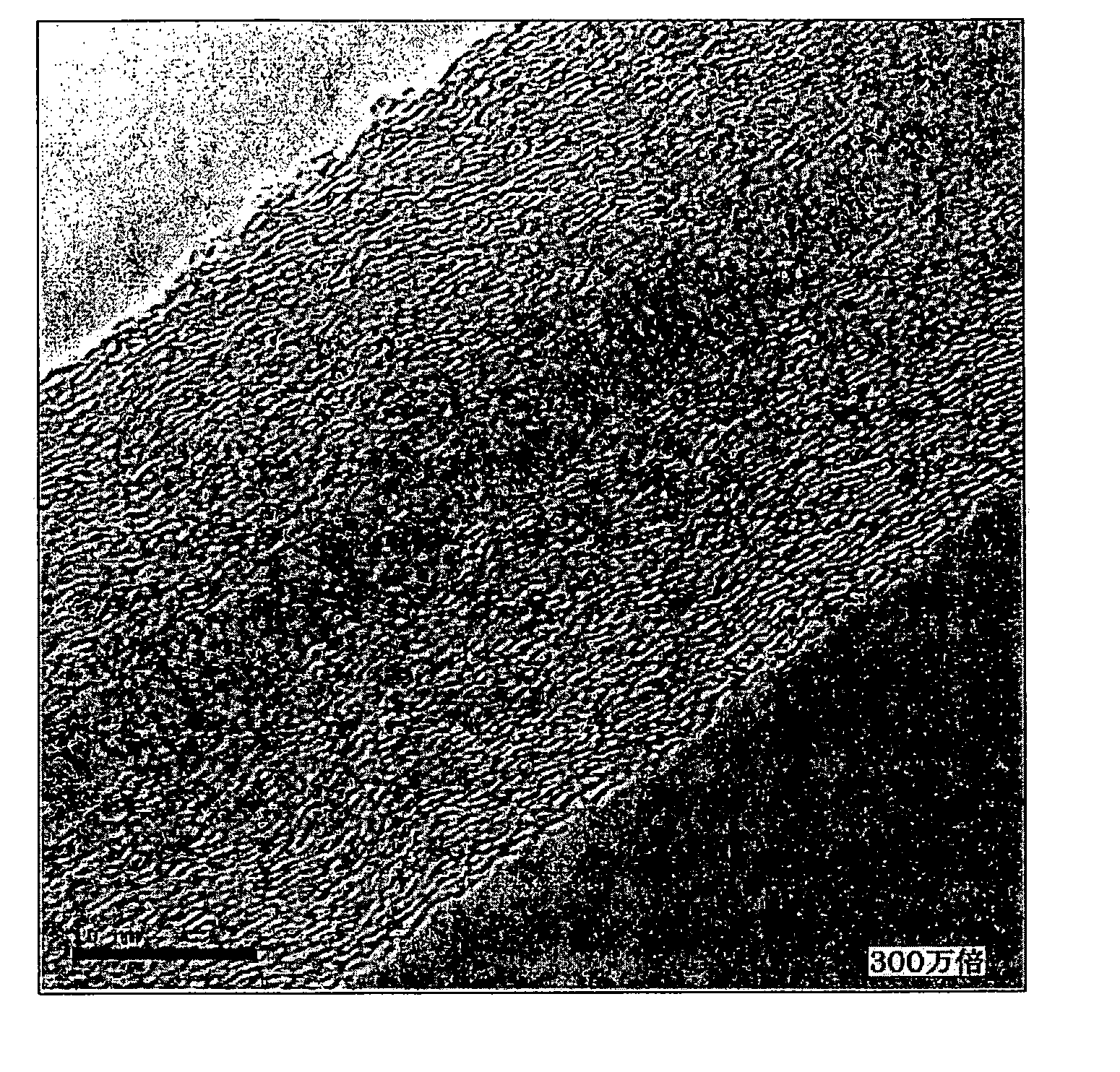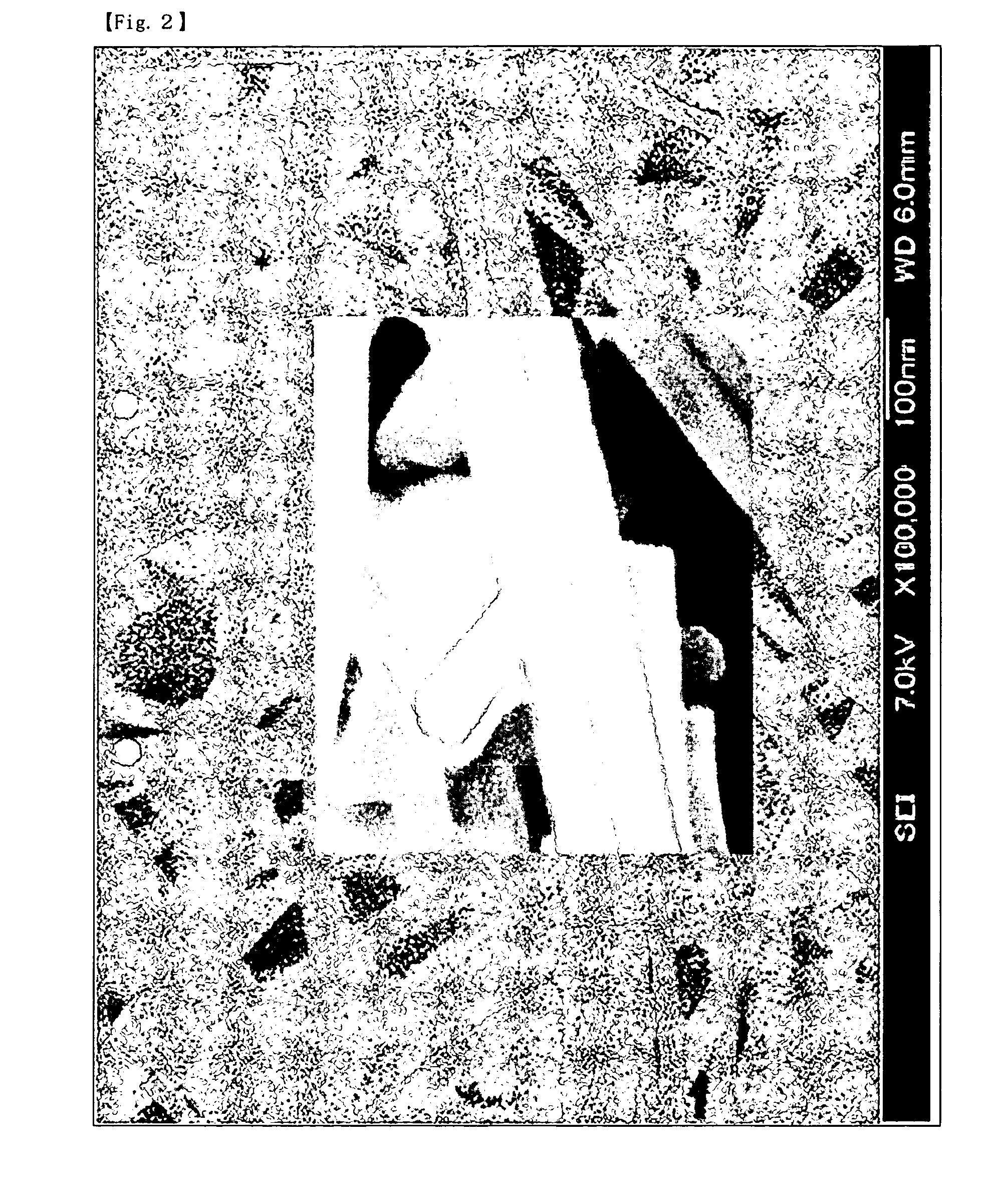Ultrathin carbon fibers
- Summary
- Abstract
- Description
- Claims
- Application Information
AI Technical Summary
Benefits of technology
Problems solved by technology
Method used
Image
Examples
example 1
[0100] Using the CVD process, ultrathin carbon fibers are synthesized from toluene as a raw material. The synthetic system used is shown in FIG. 8.
[0101] The synthesis was carried out in the presence of a mixture of ferrocene and thiophene as the catalyst, and under a reducing atmosphere of hydrogen gas. Toluene and the catalyst were heated to 375° C. along with the hydrogen gas, and then they were supplied to the generation furnace to react at 1200° C. for a residence time of 8 seconds. The atmosphere gas was separated by a separator in order to use the atmosphere gas repeatedly. The hydrocarbon concentration in the supplied gas was 9% by volume.
[0102] The tar content as a percentage of the ultrathin carbon fibers in the synthesized intermediate (first intermediate) was determined to be 10%.
[0103] Next, the fiber intermediate was heated to 1200° C., and kept at that temperature for 30 minutes in order to effectuate the hydrocarbon separation. Thereafter, the fibers were subjecte...
example 2
[0106] The synthetic system used for this example is shown in FIG. 10. Benzene was used as the carbon source. Ferrocene and thiophene were used as the catalysts, which were added and dissolved in benzene. Then, the dissolved mixture was vaporized at 380° C., and the vaporized mixture was supplied to the generation furnace. The temperature in the generation furnace was 1150° C., and hydrogen gas was used as the atmosphere gas in the generation furnace. Residence time for the hydrogen gas and raw material gas was set to 7 seconds. The tar concentration in the carbon fibers (first intermediate), which were collected at the downstream side of the furnace supply gas, was found to be 14%.
[0107] Next, the carbon fibers (first intermediate) were subjected to heat treatment at 1200° C. for 35 minutes. After the heat treatment, the specific surface area of the resultant carbon fibers (second intermediate) were determined to be 33m2 / g. The ID / IG ratio, which was measured by Raman spectroscopy...
example 3
[0109] The ultrathin carbon fibers obtained in Example 1 was analyzed with an X ray diffraction. For comparison, a graphite sample was also subjected to X ray diffraction analysis. The X ray diffraction patterns obtained from these determinations are shown in FIG. 6. However, because the peak intensity for the ultrathin carbon fibers of Example 1 was very weak, the trace for the ultrathin carbon fibers was amplified 10 times for comparison with that for graphite.
[0110] From the comparison, it was found that both samples had a peak corresponding to the diffraction of the (110) face lying at approximately 77°. It was also found that the graphite sample had a peak corresponding to the diffraction of the (112) face lying at approximately 83°, while the sample of the ultrathin carbon fibers of Example 1 did not have such a peak. Therefore, this result shows that the ultrathin carbon fibers according to the present invention do not have a regular, three-dimensional structure like that of...
PUM
 Login to View More
Login to View More Abstract
Description
Claims
Application Information
 Login to View More
Login to View More - R&D
- Intellectual Property
- Life Sciences
- Materials
- Tech Scout
- Unparalleled Data Quality
- Higher Quality Content
- 60% Fewer Hallucinations
Browse by: Latest US Patents, China's latest patents, Technical Efficacy Thesaurus, Application Domain, Technology Topic, Popular Technical Reports.
© 2025 PatSnap. All rights reserved.Legal|Privacy policy|Modern Slavery Act Transparency Statement|Sitemap|About US| Contact US: help@patsnap.com



